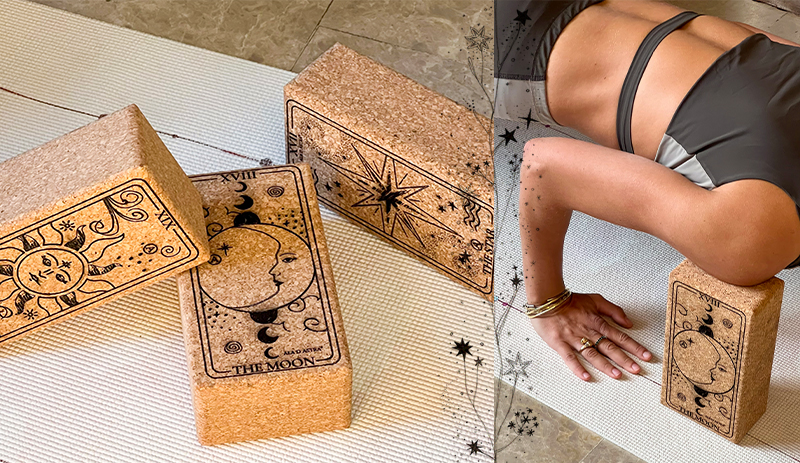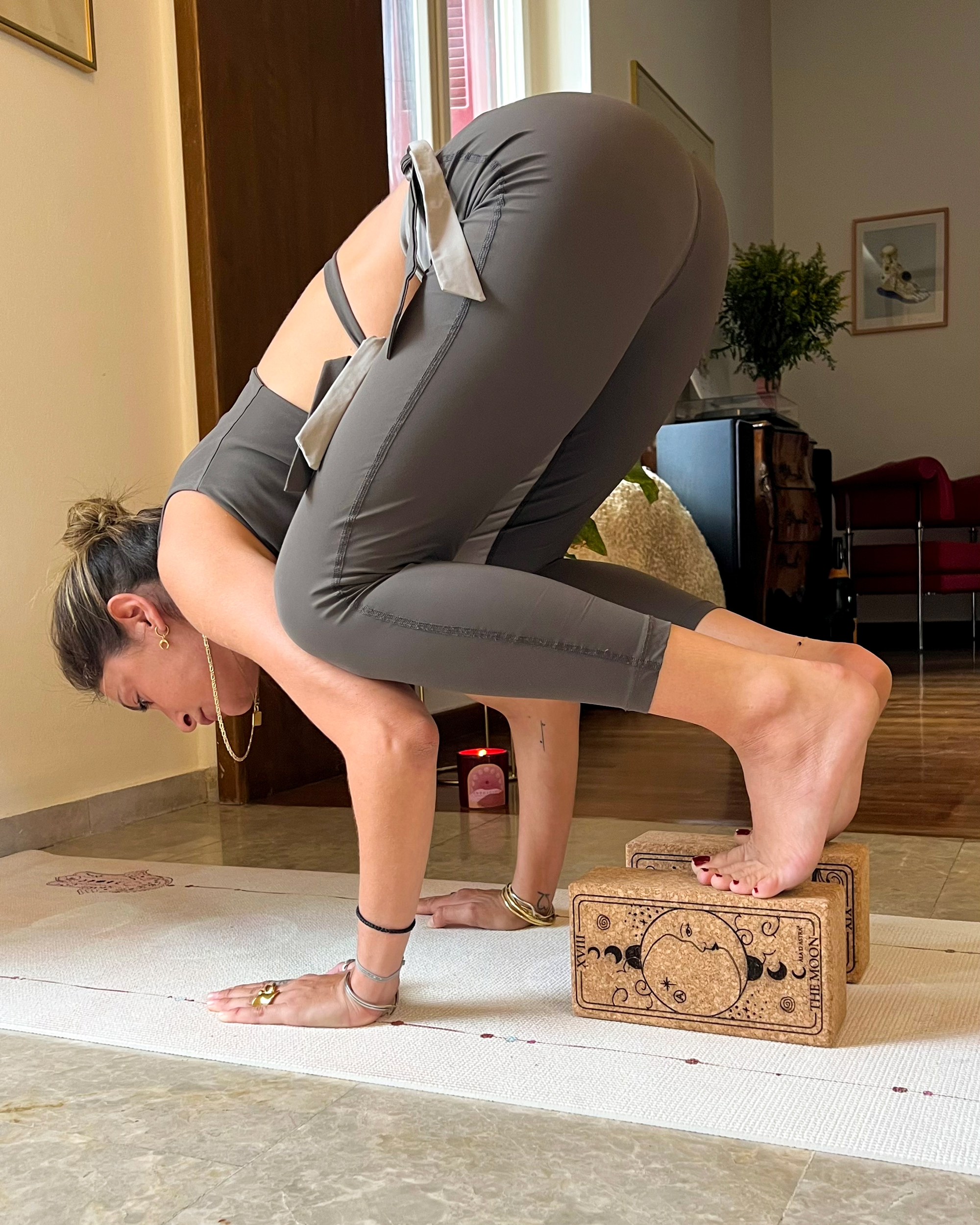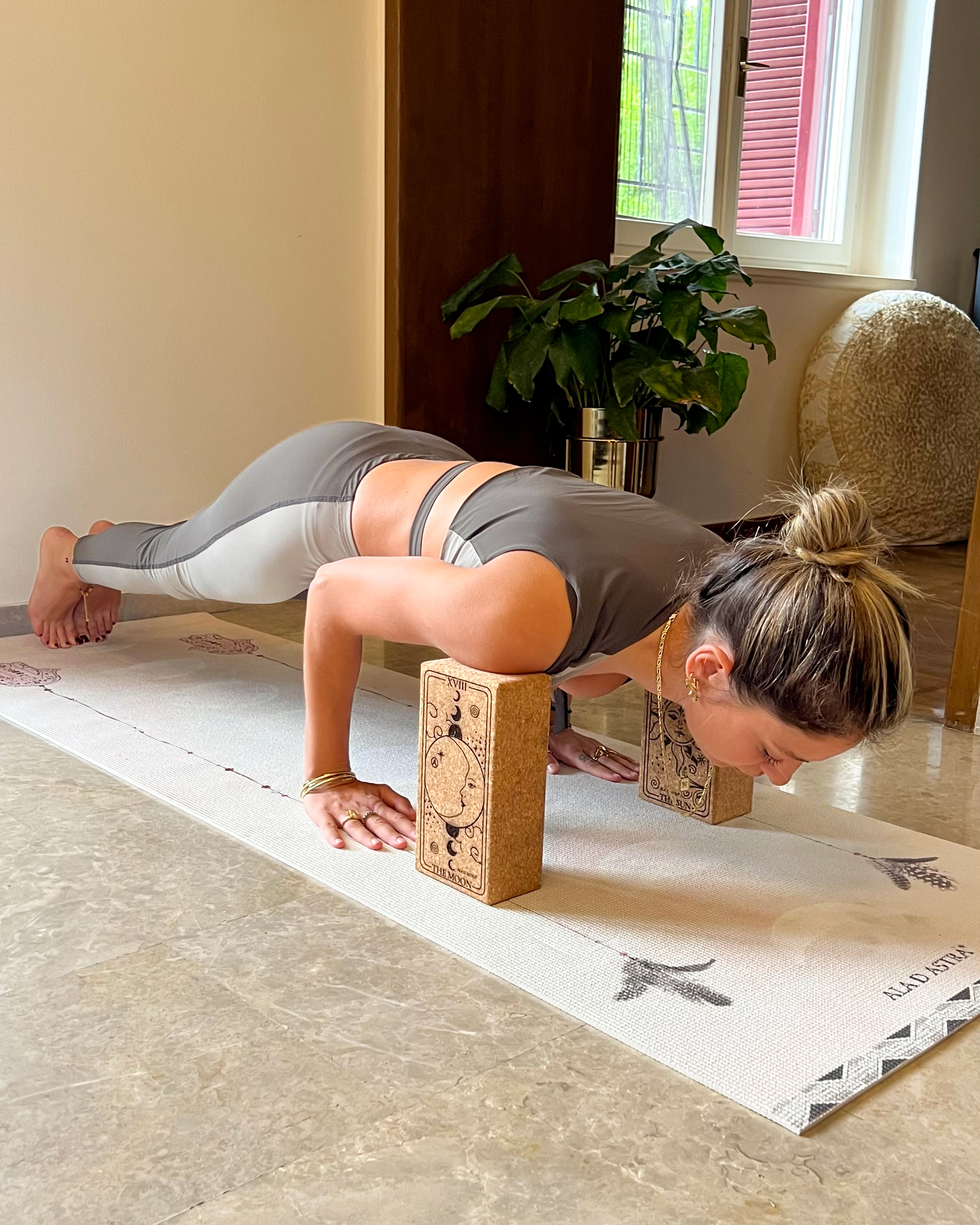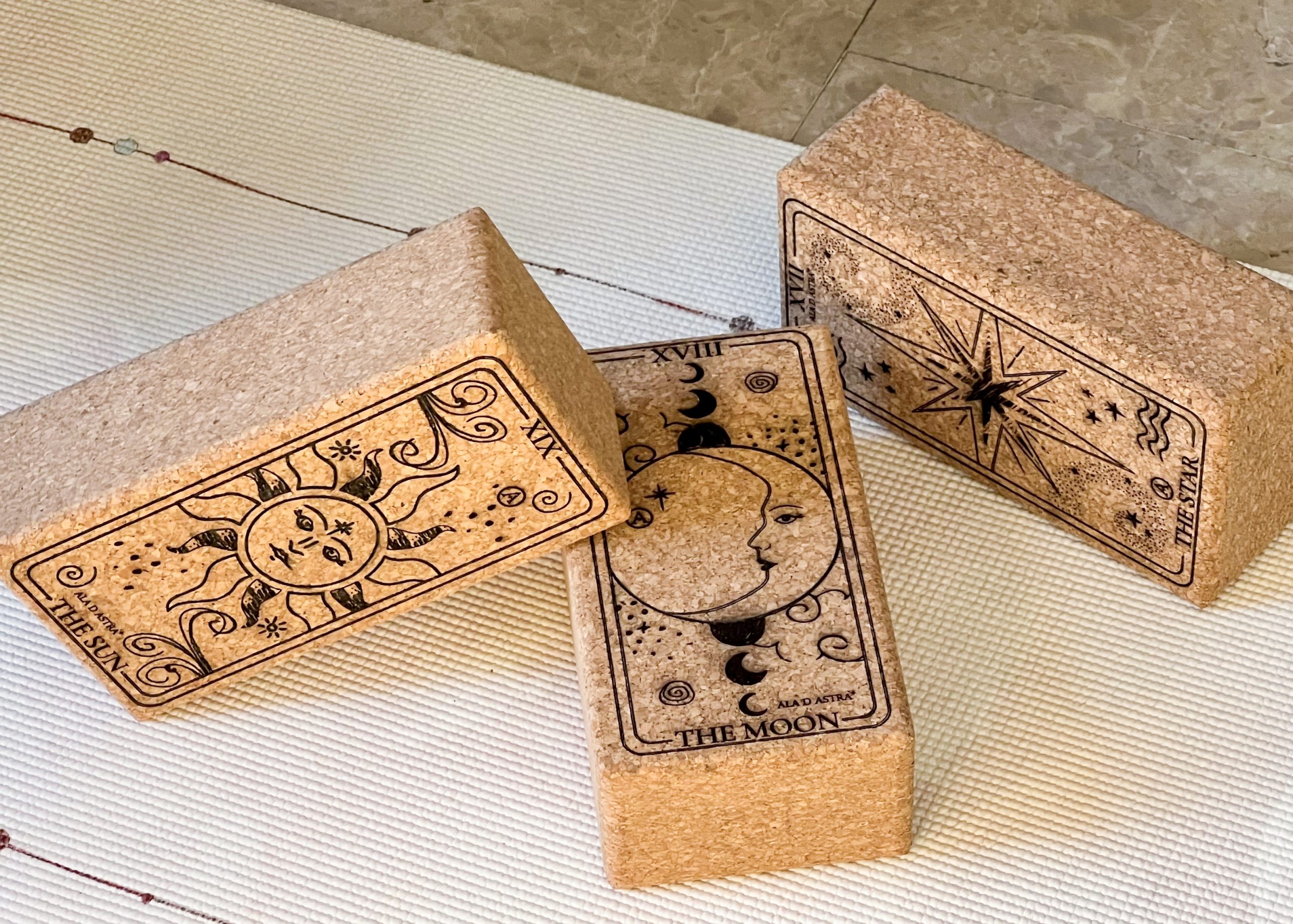Aladastra Yoga Blocks enhance your practice by offering support, balance, alignment and an assist on stretching and back-bending. A yoga block can be a super useful tool for beginners and more experienced yogis as well. Cork blocks have a resilient solid, dense and firm structure than foam blocks, allowing more support, grip and safety.
4 Strengthening Asanas using Yoga Blocks:
1. Bakasana or Crow/Crane Pose
Crow or Crane Pose improves focus and stretches the glutes, thighs, and wrists. It is a powerful asana that strengthens core, upper back, chest, hips, hamstrings, arms, shoulders, and forearms. However, it is not an easy pose, escpecially for beginners.
Using a yoga block can be a great help to work your way into Bakasana. Placing a block underneath your feet, so that they are a few inches off the floor, will enable you to bring your shins higher on your upper arms, even if your hips are tight.
From that position, a great exercise would be to engage your abs and alternate lifting your legs off the block. Lift one leg, lower it, and lift the other leg. After enough repetitions, try to lift both feet at the same time while you control your core and upper body. Practicing Bakasana with a block will eventually get into the pose.
2. Parsva Bakasana or Side Crow/Crane Pose
Parsva Bakasana is a powerful arm balance that can build physical strength in the abs and upper body, as well as inspire confidence, patience, flexibility, and fearlessness. In addition to strengthening your arms and wrists, Side Crow or Crane Pose can improve your sense of balance.
Most people think this asana relies on arm strength. However, activating the abs as you twist your core is critical to hold you up in the position, and to avoid putting too much pressure on the wrists.
As this is also a balancing pose, many of us feel a bit unsteady. To secure balance and the correct muscle engagement, set a yoga block in front of you so you can rest your head on it. Lower your head on the block as you lift your feet off the floor and shift forward into the pose.
3. Chaturanga Dandasana or Four-Limbed Staff Pose
Chaturanga Dandasana is a very important and vital pose in many yoga flows. For some people though there is difficulty to get into the asana as there is the tendency to drop the chest too low.
Placing two yoga blocks under the highest height of the shoulders will stabilize the upper extremities and act as a reference point as to avoid dropping the chest too low. Moreover, the blocks work as a reminder to shift weight forward and stack the elbows over the wrists.
4. Working our way to the Jump Through
The glorified Jump Through is the glue that connects asanas, and when it’s done in its full expression, it is effortless, graceful, and very rewarding. It is a wonderful movement of strength, control and mobility that many yogis want to achieve. Nevertheless, it is a difficult exercise as it requires a lot of muscular stability and strength. That is why there are a lot of alternatives, and modifications.
One of the most successful ways to strengthen up your body, and work your way to the Jump through movement, is to practice seated shoulder shrugs with yoga blocks underneath your hands.
Begin in a seated position with your legs out in front and your hands placed firmly on the blocks just in front of your hips. Push into your hands to lift your hips and lower body off the ground. It might help to think of this movement like a shrug, but instead carrying your entire body weight.
This can be done with the legs bent, or crossed, or straight in front of you. It depends on your strength and flexibility. Until you have the strength to lift your entire lower body, keep your feet on the ground and only lift your hips.
Discover our Arcana Yoga Blocks Collection, made of high-quality sustainable cork and laser engraved by artisans in Athens, and shop your favorite!
Stay tuned for more,












